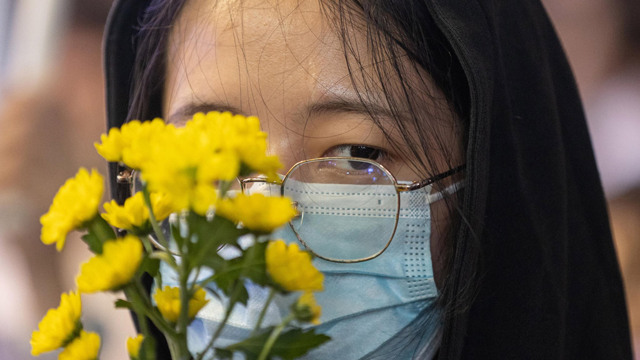The censorship of the Chinese authorities has been at work since November 28 to erase all traces of the wave of protests of the previous days, triggered by health restrictions and to ask for greater freedoms. These are demonstrations of a magnitude not seen for decades.
On November 27, a crowd of protesters, responding to calls on social networks, had expressed their anger mainly in Beijing and Shanghai, catching the police by surprise. Among the slogans shouted in unison: “Enough of the covid test, we are hungry!”, “Xi Jinping, resign! CCP (Communist Party of China), step aside!”, “No to confinements, we want freedom”. Demonstrations had taken place on the same day in Wuhan (where the world‘s first case of covid-19 was identified almost three years ago), Canton, Chengdu and Hong Kong. In its scale, the mobilization, whose total number of participants is difficult to ascertain, was probably the largest since the pro-democracy riots of 1989. Clashes erupted between protesters in the protests – some displaying flowers or white paper as symbols of censorship – and law enforcement and many people were arrested.
It was the culmination of a popular discontent that has grown steadily in recent months in China, one of the last countries in the world to apply a strict “zero covid” policy, which implies continuous confinements and almost daily molecular tests of the population.
Under surveillance
The straw that broke the camel’s back was the fire that broke out in Urumqi, the capital of Xinjiang (north-west) province, in which ten people died and which catalysed the anger of many Chinese, who accuse the health restrictions of making rescue operations impossible. But this weekend’s demonstrations have also brought out demands for greater political freedoms, even for the resignation of President Xi Jinping, who has just been reconfirmed at the head of the country for a third term.
Thus on the morning of November 28, the police monitored the gathering places of the previous day in Beijing and Shanghai. Near the Liangma River in the capital, where more than 400 Chinese youths had gathered the night before for several hours, chanting “We are all Xinjiang people!”, police cars were parked and officers patrolled the canal. In Shanghai, one of the streets that had been blocked by crowds was surrounded by high blue barriers along the sidewalks during the night to prevent any regrouping.
On Chinese social networks, all information regarding the weekend demonstrations seemed to have disappeared. On the Weibo platform, a sort of Chinese Twitter, searches for “Liangma river” and “Urumqi street”, two of the previous day’s protest sites, did not yield any results related to the mobilization.
Videos showing students singing and demonstrating in other cities disappeared from the WeChat platform. They were replaced by messages warning that the post had been flagged as “sensitive content contrary to regulation”.
On the Weibo search engine, the keyword search #A4 – referring to the white papers brandished during the demonstrations – seems to have been modified to give only a few results.
The Chinese authorities’ tight control over information and health restrictions on travel within the country complicate the verification of the total number of protesters. But such a large-scale uprising is very rare in China, taking into account the active crackdown on all forms of opposition to the government. The People’s Daily published an article warning against “paralysis” and “fatigue” in the face of the zero covid policy, without however mentioning a term.
“People have reached a saturation point as there are no clear directions on the way to ending the zero covid policy,” Alfred Wu Muluan, an expert on China politics at the National University of Singapore, told AFP. “The party has underestimated the anger of the population,” he adds.
The demonstrations spooked investors, and Asian stocks were down sharply on Nov. 28. On the same day, a new record of covid-19 cases was reached in China, with 40,052, even if the vast majority are asymptomatic. And the figures still remain rather low as a percentage of a population of 1.4 billion inhabitants.
(Translation by Thomas Lemaire)
